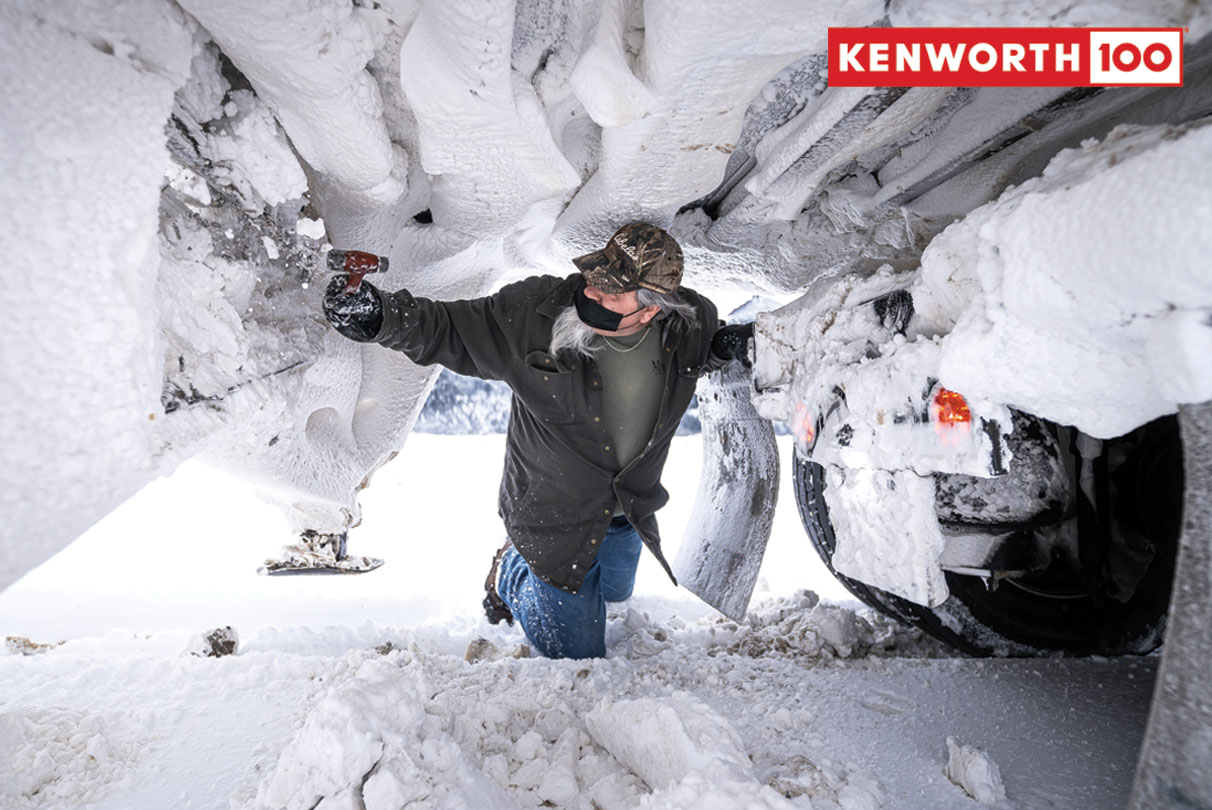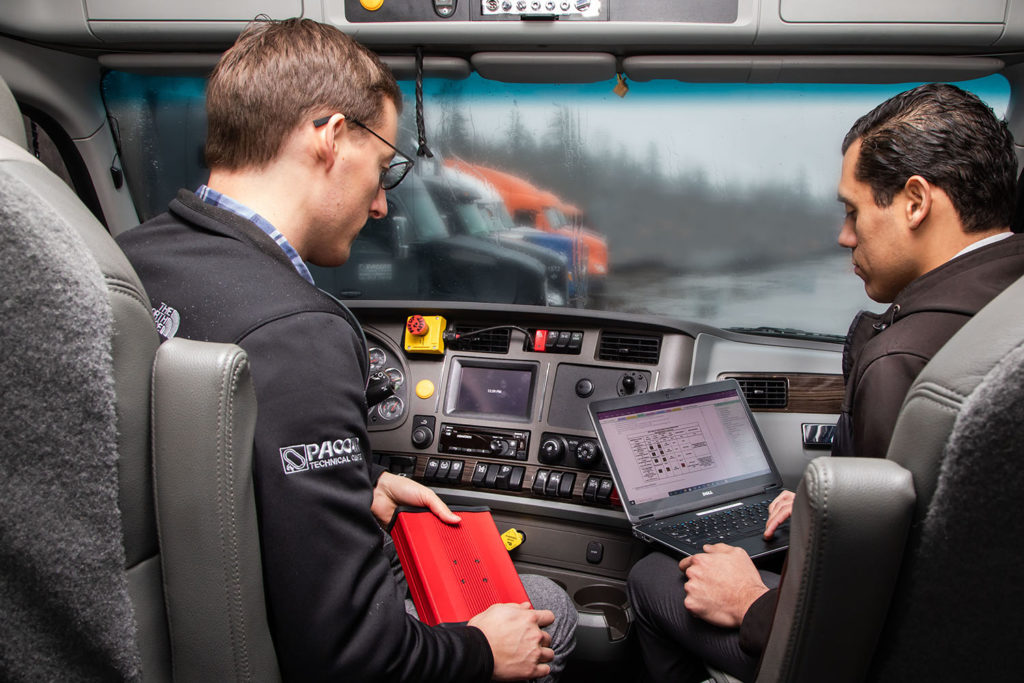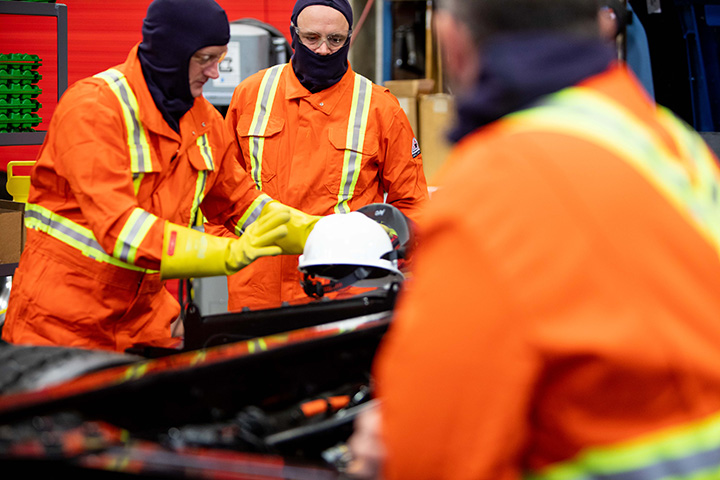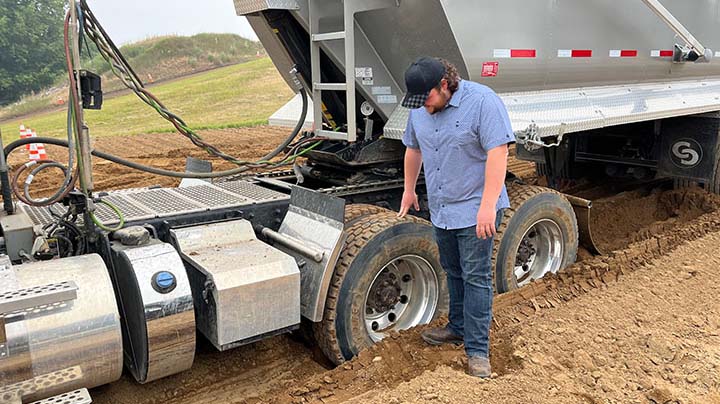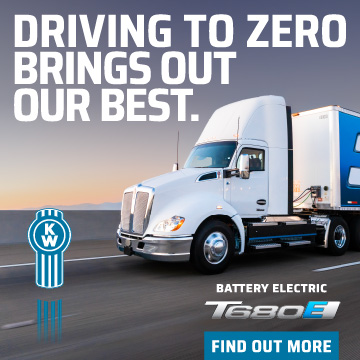When you ask Kenworth engineers about the tradition of the company, chances are they’ll tell you about “Muddy Boots.” It’s long been lore of the company – how early engineers traveled to customer sites (often logging operations in the early days) to look at Kenworth trucks from top to bottom to see how they were holding up in the customer’s application. They wore boots. And they got muddy.
Today, boots are still worn by Kenworth engineers, and they do get muddy as they routinely visit customer sites and drive trucks themselves.
“It all begins with the ‘voice of the customer’ – hearing what our over-the-road, vocational, and medium duty customers need from their trucks,” explained Kevin Baney, Kenworth general manager and PACCAR vice president. “Building trucks is never static, and it’s why we visit customers and have customer councils to keep the dialogue flowing and validation coming before we unveil a new product. Truck building is always evolving not only from a productivity standpoint – driving the cost of operation down – but in driver comfort and reliability. We continue to build what customers want and need.”
According to Joe Adams, Kenworth’s chief engineer, one way this is accomplished is through Kenworth’s “Drive and Sleep” program where engineers are encouraged to get their CDL to experience life on the road by driving the trucks they design. Putting engineers in trucks, often traveling great distances – to truck stops or to remote locations – to interact with drivers in real-life situations, is a long-standing part of Kenworth’s heritage, dating back to the company’s founding in 1923.
“It is said to truly understand a person, you must walk a mile in their shoes. For us here at Kenworth, we take that philosophy to heart in the importance we place behind the scenes in getting our engineers out to live in the shoes of our customers,” said Adams. “We understand that drivers live and work inside our trucks so what we learn on the road influences future modifications and assures that driving a Kenworth drives a better product.”
Kenworth engineers are supported even further thanks to the PACCAR Technical Center, site of the Kenworth parent company’s state-of-the-art product development and testing facility. Kenworth utilizes an ergonomics team led by Steve Jahns, who serves as technical engineering manager for ergonomics & human-machine interface (HMI). Jahns has been with PACCAR for 27 years.
“Simplified, our group works with anything that has to do with the driver,” he said. “For example, we need to understand how drivers react to new displays and controls we’re developing. Information should be accessible at a glance – driver distraction is real, and we develop and test to make sure whatever Kenworth develops is user-friendly. When it comes to comfort and actual driving, when I first started at PACCAR, a truck would ‘fit’ about 60% of the driver population. Today, seat travel, visibility – even the angle of the pedals – comfortably fit 95% of the world population to make driving a truck more comfortable for every shape and size. Even seats are evaluated with pressure mapping and accelerometer monitoring for bounce. We want drivers to be as comfortable as possible.”
While Kenworth uses its customer council for big picture ideas within a multitude of vocations, it also often relies on those same companies – having drivers test new ergonomic ideas.
“I’ve been on the medium-duty customer council for eight years,” said Craig Flintoff, VP of Operations for Medosweet Farms, a Northwest company that runs a mix of medium and heavy-duty trucks. “Kenworth asked me to join the council since I know trucks (he still drives on occasion), I’m opinionated, and I’m not afraid to share my thoughts, good, bad or, indifferent. Our drivers are also participating, and they recently provided feedback on new dash ideas Kenworth has been developing. They also took the time to drive with us during complex city deliveries to see how the trucks perform in tight constraints. Listening to customers and allowing us to be a part of the design process can only make for a better truck.”
And, yes, Kenworth engineers still get muddy boots.
“We routinely go out into the field and spend time with our customers,” said Mark Wagner, Kenworth’s assistant director of product planning. “All vocations are covered, and we dive deep to explore areas that can be improved upon. There are so many components that make up a truck, and so many unique challenges our trucks undergo. Improvement is an on-going process – something might work well for 99% of our customers, but we always strive to satisfy that last percentage point.”
Real World Testing: Make it or Break it on North America’s Toughest Roads
As chief validation engineer of the PACCAR Technical Center, Steve Koeffler leads teams into the toughest environments known to man. It’s all to create trucks able to withstand nature’s wrath. Before a new Kenworth is released to market, the components inside and out must pass a gauntlet of challenges.
In the winter, test drivers traverse roads (and ice roads) near Yellowknife in Canada’s Northwest Territories, a four-day, 1,400-mile trip from his “office” at the Tech Center. At Yellowknife, the team targets temperatures as low as minus 40 degrees Fahrenheit, with average temperature in January a balmy minus 20.
“The drive up to Yellowknife represents the unique road conditions many truckers face during winter,” said Koeffler. “The day begins with cold starts in the morning. Then there are often snowstorms and ice buildup punctuated by occasional trips out of the rig to put on chains. Our drivers take notes on how the trucks operate and later write down observations to help engineers understand how the trucks are performing.”
Once in Yellowknife, the team will drive up to 200 miles a day, but it’s the evening and morning that command the most attention.
“When we shut down, other truckers look at us like we’re crazy,” said Koeffler. “Truckers up there never shut down their engines due to the extreme temperatures, but we’re testing cold starting and how systems function in bitter cold. We’ll let the truck ‘soak’ for 12 hours, then do an unassisted cold start. We’ll have a battery blanket and use No.1 diesel, but that’s it – no fuel line or oil pan heaters. We’re checking how the PACCAR MX engine and supporting systems perform and how coolant is circulating – which will also thaw out diesel exhaust fluid (DEF).”
Summer testing is no less intense.
More than 2,500 miles to the south, Death Valley – at 282 feet below sea level – is the yin to the Northwest Territories’ yang. Hot. So hot, tourists often fry eggs on the sidewalk just to see if it can be done. It can. One segment in the Valley where engineers like to run is from Stovepipe Wells to Towne Pass, which features 8% grades and an elevation gain of 4,950 feet.
“It’s a hard, aggressive climb to the top, with a lot of shifting and strains on the cooling system, engine, transmission, and components,” Koeffler said. “This makes nearby Baker Grade seem pedestrian. We’ll start out when temperatures are close to 120 degrees, and at the top – some 17 miles later – it drops to 90 degrees.”
After grinding through the heat, the team often heads toward Colorado and Eisenhower Tunnel, and other routes nearby. They undergo high elevation testing starting at Silverthorne – elevation 9,000 feet. From there, they ascend another 2,500 feet to the tunnel. They’ll also go over to Loveland Pass – at 12,000 feet, it’s the highest point in the United States where commercial vehicles can legally travel.
“We’re starving for oxygen at that elevation,” said Koeffler. “And it’s a great test for the PACCAR MX engines and turbos, and figuring out ways to maximize engine performance. When you have one-third less oxygen, it can decrease your horsepower. We’ll also test the components related to the engine and powertrain.”
Kenworth continues to build on the success from the early days — where good ideas from the engineering team are well thought out and validated prior to releasing a truck to market. Kenworth engineers drive trucks. They meet with customers to understand specific requirements and figure out ways to improve upon performance. And they test and then test some more.
“Building a truck has certainly changed over the years,” concluded Baney, who himself got “muddy” during his early years in engineering, culminating as Kenworth’s chief engineer. “We’ve been true to our history in building trucks that meet and exceed our customers’ expectations. That will continue in driving us forward over the next 100 years. I think engineers from the early days of Kenworth would be proud of what we’ve accomplished and how we’ve taken what they started and evolved the process into building the World’s Best trucks.”




